7 Little-Known Benefits of ERP Systems
At Software Advice, we preach the good word of software and how it can benefit businesses. But when it comes to the complex world of enterprise resource planning (ERP) software and the top ERP benefits users can expect to realize, it can be a tougher sell.
There’s one common refrain we hear from buyers using disparate systems to conduct their processes: “Why is an ERP system better than what we’re using now?”
We’re glad you asked.
7 of the top benefits of ERP software
1. Use business data to improve and strengthen security
2. Make use of the community knowledge and support
3. Apply better data to make better business decisions
5. Give employees more power to be revenue generators
6. Be mobile-accessible to bring your business with you
7. Choose from plenty of software options
Now let’s look at these benefits in detail below and some solutions that can help you achieve these.
1. Use business data to improve and strengthen security
Modern ERP systems offer advanced user-permission settings. No more unsecured Excel sheets and Google documents for your financial or inventory needs.
ERP software is more secure and robust for these functions, and setting user permissions through ERP’s access control functionality can prevent sensitive data from ending up in the wrong hands; users will be able to access only what they need to from the system.
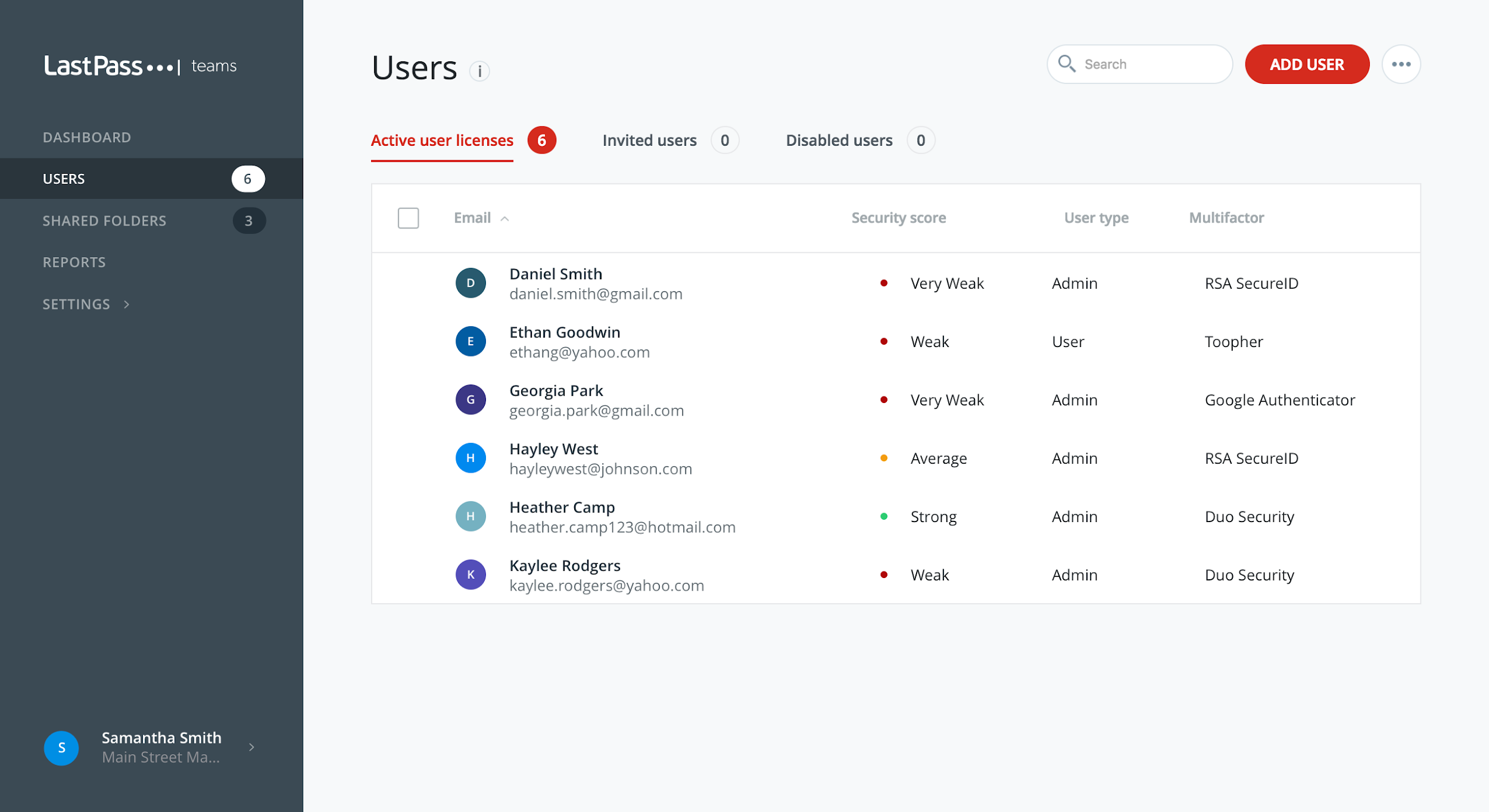
Active user licenses in LastPass Enterprise (Source)
However, in the rare event vendors discover a security exploit in their software, they can typically patch it quickly. Vendors are also able to quickly share the update with all users automatically.
2. Make use of the community knowledge and support
Hundreds of thousands of businesses use ERP software and have employees who are actively involved with their platform’s online knowledge community. If you experience an issue or problem, chances are someone else has experienced it, too.
All you need to do is run a simple search on your platform’s knowledge base for resolutions of less serious problems. These forums are pretty active, and you usually get answers from other users as well.
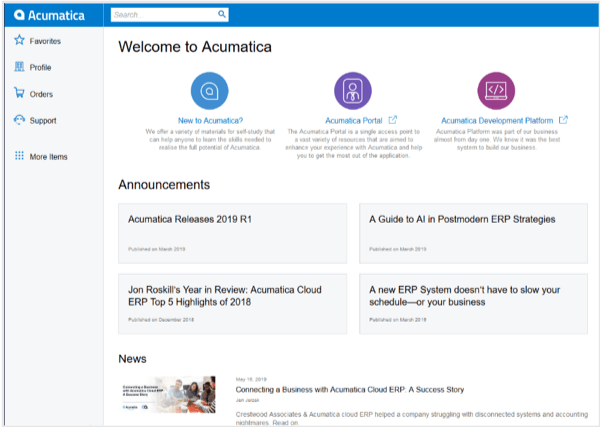
Customer support portal and knowledge base in Acumatica (Source)
3. Apply better data to make better business decisions
Using disparate, poorly integrated business software systems can lead to messy, non-standardized data. This increases the chances of year-over-year comparisons being inaccurate, making the process more difficult and time-consuming. This becomes a serious detriment to accurate forecasting.
A modern ERP system comes integrated with all the necessary applications. Meaning, your data is standardized and the tools to see year-over-year comparisons and forecasts are built in. These are often presented in an easy-to-read dashboard format. As a one-stop shop for all your key performance indicators, ERP dashboards are critical to the success of your business.
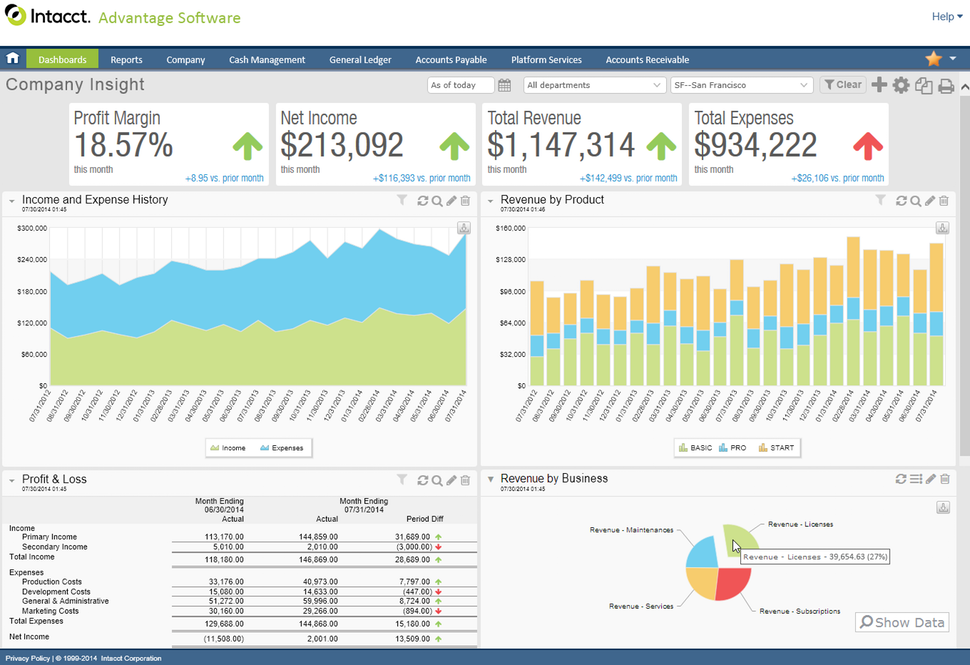
ERP dashboard in Sage Intacct (Source)
4. Stay on top of regulations
You no longer need to worry about governmental hurdles making your employees’ jobs harder. Most ERP systems are equipped to ease regulatory compliance required for business processes such as financial accounting, data security, and product traceability.
Here are some examples:
Publicly traded companies need to ensure all their financial records are 100% accurate. ERP software helps keep everything in line through Generally Accepted Accounting Principles (GAAP).
Small regional food manufacturers can benefit from the product traceability tools in a modern ERP system. These ensure that companies are able to trace any instances of contamination or improper handling back to the source in their manufacturing plant, and also help to reduce food waste.
5. Give employees more power to be revenue generators
Inefficient processes and decentralized data mean greater labor costs for businesses. These can be especially detrimental for small to midsize businesses (SMBs) that have limited resources.
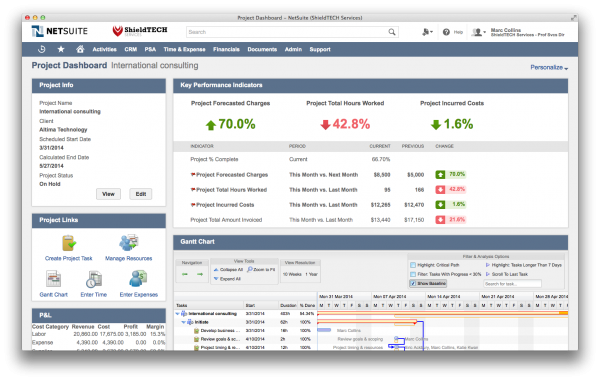
The project dashboard in NetSuite (Source)
ERP systems can automate and streamline daily processes, freeing up your employees’ time to do things that actually generate revenue. For example, software can automatically tie sales orders to the accounting system, or run reports without the need for complicated spreadsheets.
According to Gartner’s “Hype Cycle for Postmodern ERP” (report available to Gartner clients), businesses should treat ERP as a technology strategy. It can efficiently automate and link administrative and operational capabilities such as finance, HR, purchasing, manufacturing, and distribution to help achieve business flexibility and agility.
6. Be mobile-accessible to bring your business with you
Many ERP vendors are offering native applications on Android, iOS, and Windows smart devices for increased flexibility and ease of use. These applications typically offer updates in real time with crucial business KPIs, including:
Sales
Revenue
Customer acquisitions
Web traffic
Manufacturing output
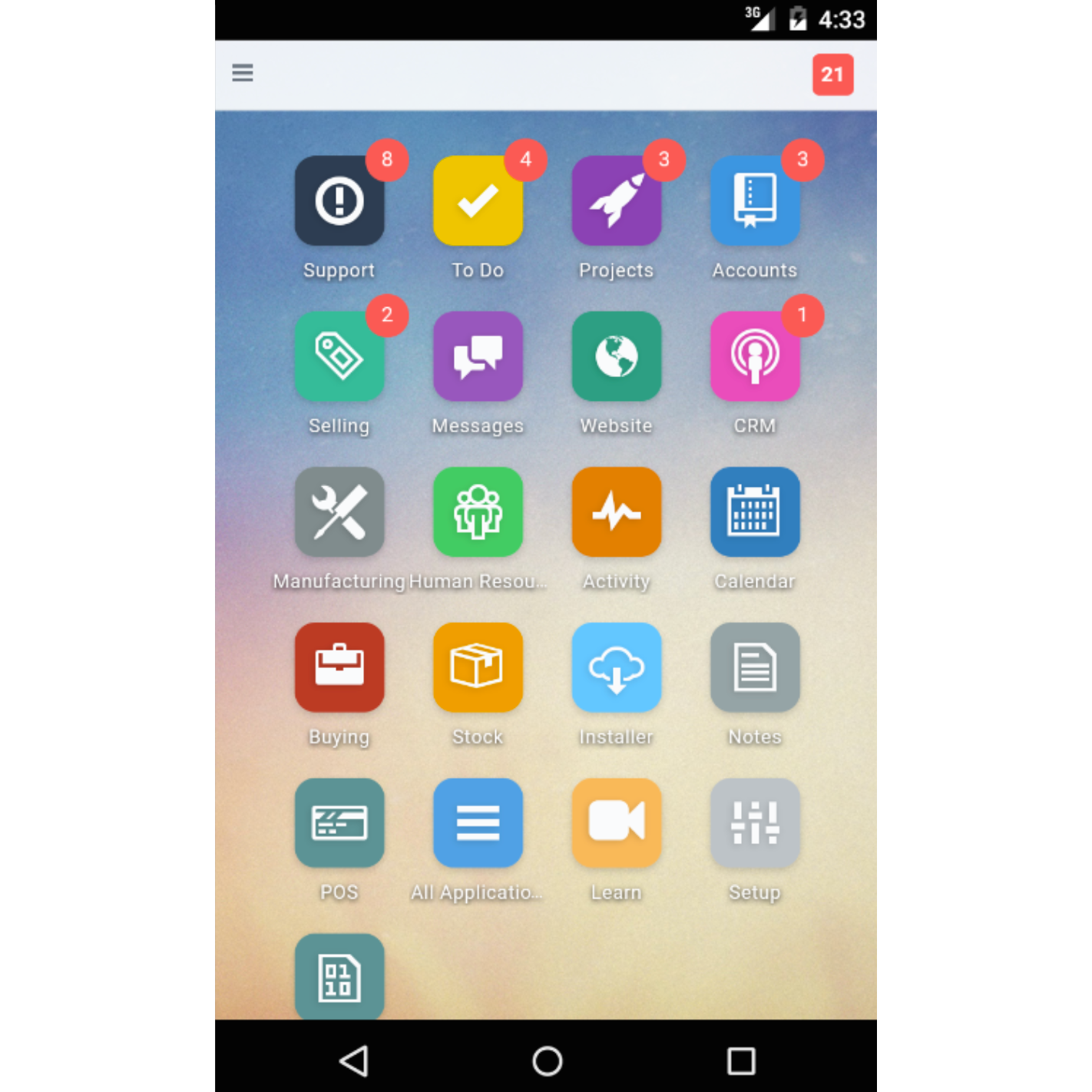
Mobile interface in ERPNext (Source)
One of the predictions in Gartner’s “Market Guide for Service-Centric Cloud ERP Solutions, 2019” report (available to Gartner clients) is that, by 2023, 60 percent of service-centric enterprise ERP deployments will be cloud-based. This will only increase the mobile accessibility for users—especially as more and more tech-savvy professionals enter the marketplace.
This generation prefers a connected network of applications, which can be easily managed on a tablet or better, their phones. They’ll automatically prefer ERP vendors who offer integrated apps with other software so that they can easily switch between functions within seconds.
7. Choose from a number of software options
There are plenty of fish in the ERP sea, from industry giants to niche vendors that cater to a handful of clients in a specific industry. A surplus of players in the market is great for customers—and every vendor has its own unique advantages and target industries.
Whatever your needs and budget are, there is an ERP vendor out there that will fit your organization like a glove.
Conclusion and next steps
Now that you’ve seen the benefits of ERP software, it’s time you switched up from your manual methods to automated processes. Here’s what you can do next:
Shortlist your top ERP solutions. If you haven’t already, browse our list of ERP software vendors and FrontRunners to come up with a shortlist of vendors you could demo. Be sure to check each solution’s offered features to understand the software better and match them to your needs.
Research industry trends. The ERP software landscape is constantly evolving, as new and emerging technologies penetrate the market. Our resources page should be your go-to for all things ERP, from “Key Criteria for ERP Software Selection” to “The 6 Phases of a Successful ERP Implementation.”
Talk to one of our software advisors. Our expert advisors provide free, fast, and personalized software recommendations, helping companies of all sizes find products that meet their business needs. Schedule an appointment with an advisor here.